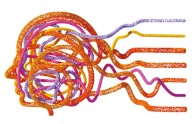Dagli abissi dell’oceano ecco l’esemplare con le orecchie dell’elefantino Disney più famoso del mondo
Uno dei più bei film della Pixar raccontava le vicende di Nemo, il pesce pagliaccio con la pinna atrofica, smarritosi nell’Oceano Pacifico. Si allontanò dalla barriera corallina per una sfida lanciata dagli amichetti di scuola: avrebbe vinto chi più si sarebbe avvicinato al “motoschifo”, così chiamavano il roboante mezzo degli umani, il motoscafo. Nella compagnia di piccoli c’era anche Perla, una graziosa polipetta rosa dai grandi occhi azzurri. Dal corpicino gelatinoso le spuntavano un paio di orecchiette che non si è soliti vedere sulla testa di un polipo.
La verità è che Perla non era una graziosa polipetta rosa qualunque, bensì un esemplare di polpo Dumbo.
Appartenente alla famiglia Opisthoteuthidae, vive negli abissi degli oceani, soprattutto al largo della California, a tre o quattro mila metri di profondità; a volte si spinge fino a settemila metri. È un polpo dall'aspetto insolito, perché ha una forma appiattita e con tentacoli più corti. Oltre la metà di ognuno degli otto tentacoli è rivestito da una membrana, che favorisce il movimento. Non solo: il polpo Dumbo usa i tentacoli per creare delle correnti che spingono le prede verso la sua bocca. Si nutre per lo più di crostacei, vermi e molluschi bivalvi.
Il corpicino gelatinoso misura circa diciotto centimetri di diametro e si muove sfruttando le correnti per sprecare la minor energia possibile, tranne quando deve scappare dai predatori; allora si apre come un paracadute e fa uno scatto repentino. La livrea non è molto variabile, come invece per altre specie a lui vicine: solitamente è rosato-rossa oppure gialla. Inoltre, è non è provvisto di sacca dell’inchiostro, anche se - vale la pena ricordare questa svista - la Perla della Pixar si inchiostrò addosso per la paura quando fu il suo turno di avvicinarsi al “motoschifo”.
La sua peculiarità, comunque, sono le orecchie da elefantino, da cui il nome polpo Dumbo con cui è conosciuto dai più. Esse sono in realtà delle pinne che lo agevolano nei movimenti. Solo di recente gli scienziati sono riusciti a filmare la nascita di un polpo Dumbo: quel che si è scoperto è che un neonato somiglia già a un esemplare adulto, è completamente formato e presenta già le due grandi orecchie-pinne, che hanno permesso ai ricercatori di riconoscere immediatamente la specie. Addirittura, la ricerca ha rivelato che il sacco vitellino interno di cui è dotato, appena venuto al mondo, gli permette di avere un po' di nutrimento prima di iniziare a procacciarsi il cibo da solo.
Sulla scelta del nome scientifico, pare non ci siano consensi unanimi: alcuni articoli indicano Grimpoteuthis bathynectes, altri Opisthoteuthis californiana. Poco dopo la sua scoperta nel 2005, la biologa marina Stephanie Bush della Monterey Bay Aquarium Research Institute è stata incaricata di trovargli un nome ufficiale: per un po’ si è ipotizzato di chiamarlo Opisthotheusis Adorabilis, per via del suo adorabile aspetto, appunto. E come darle torto, d’altronde? Parliamo di un carinissimo polipetto rosa con le orecchie da elefantino Disney e gli occhi grandi. Basta guardarlo mentre sfiora i fondali degli abissi per innamorarsene; tra l’elegante e il buffo, uscito direttamente da un cartone animato.
Laura Spataro
One of Pixar’s most attractive films tells the story of Nemo, the clownfish, with its atrophied fin, lost in the Pacific Ocean. Nemo leaves the coral reef as a result of a challenge by his school friends: the winner was to be the fish that got closest to the ‘butt’ as they called that bombastic human vehicle, the motorboat. The group of little ones included Pearl, a cute pink octopus with large blue eyes. Sticking up from its gelatinous little body are a pair of little ears which you don’t normally see on an octopus’s head. The truth is that Pearl is not just any old cute pink octopus but a Dumbo octopus. Belonging to the Opisthoteuthidae family, it lives in the ocean abysses, especially off the coast of California, at depths of three or four thousand metres and sometimes even up to seven thousand metres. It is an octopus with an unusual appearance because it is flattened in shape with short tentacles.
Over half of each of its eight tentacles is covered by a membrane which facilitates movement. And that’s not all: the Dumbo octopus uses its tentacles to create currents which push its prey into its mouth. Its diet is mainly crustaceans, worms and bivalve molluscs.
Its gelatinous body is around eighteen centimetres in diameter and it exploits the currents to get around, thus wasting as little energy as possible except when it has to escape predators and then it opens up like a parachute and puts on a spurt. Its livery varies considerably, like other similar species, but it is generally pinkish-red or yellow. It does not have a sac of ink although - note this mistake - Pixar’s Pearl even inks herself in fear when it is her turn to get up to the ‘butt’.
Its special feature, then, is its elephant ears, which gave it the name, Dumbo octopus, which it is popularly known by. These ears are actually fins which facilitate movement.
It was only recently that scientists were able to film a Dumbo octopus being born and this led to the discovery that as a newborn it already looks like an adult, fully formed with its two ear fins which make it so immediately recognisable to researchers. Research has even shown that the inner yolk sac which it has immediately after birth gives it a little food before it has to start finding its own.
It would appear that there is no human consensus over its scientific name with some articles using Grimpoteuthis bathynectes and others Opisthoteuthis californiana. Soon after it was discovered in 2005, marine biologist Stephanie Bush of the Monterey Bay Aquarium Research Institute was given the task of finding an official name for it and for a while the name Opisthotheusis Adorabilis was considered in recognition of its adorable appearance.
And how can we disagree? It is a very sweet pink octopus with Disney elephant ears and large eyes. Just look at it floating along the seabed and you’ll fall in love: somewhere between elegant and comical, straight out of a cartoon.











